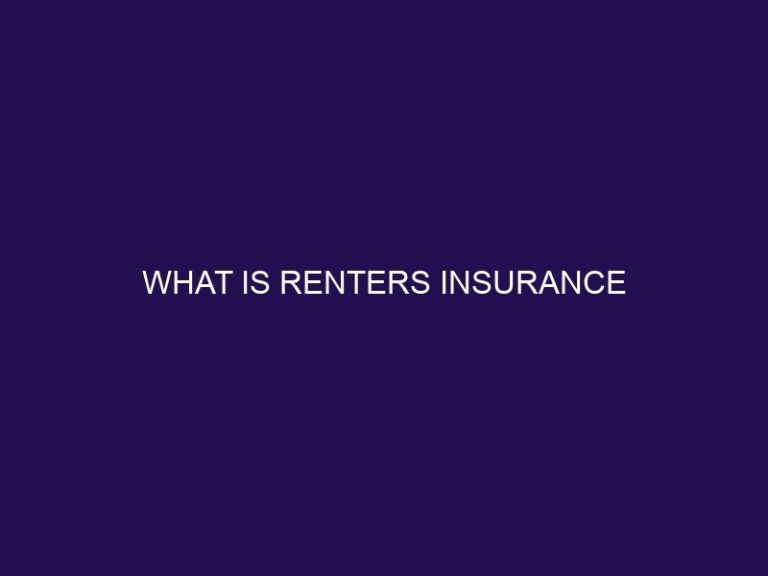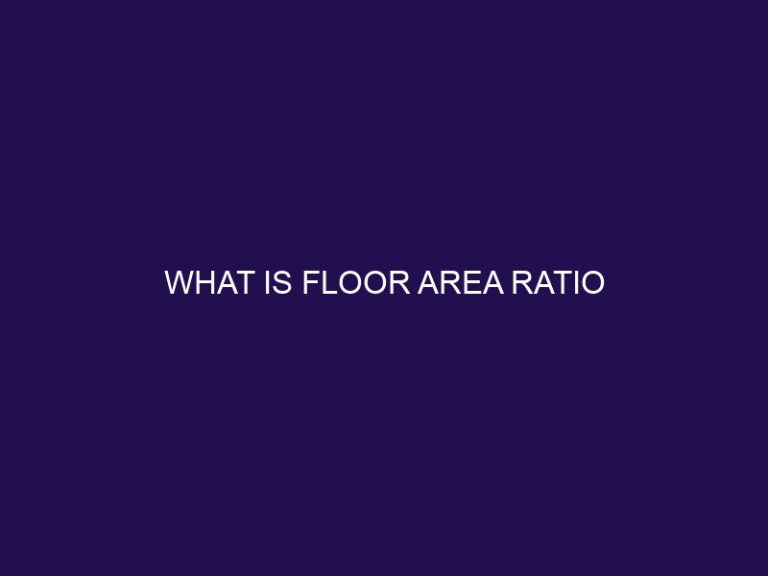What is Cap Rate
Understanding Cap Rate: What is Cap Rate and Why is it Important in Real Estate?
Cap rate, short for capitalization rate, is a crucial metric used in real estate investment to evaluate the potential return on investment (ROI) of a property. It is a percentage that represents the ratio between the net operating income (NOI) of a property and its purchase price or market value.
Cap rate is calculated by dividing the NOI by the property’s value and multiplying it by 100. It helps investors determine the profitability and risk associated with a particular real estate investment. A higher cap rate indicates a higher potential return, while a lower cap rate implies a lower return.
The importance of cap rate lies in its ability to provide insights into the property’s income-generating potential, allowing investors to compare different properties and make informed decisions. It helps identify investment opportunities, assess property value, and determine the property’s financial performance.
To determine a good cap rate, investors need to consider factors such as location, property type, and prevailing market conditions. Location and demand play a significant role in determining the cap rate, as properties in high-demand areas tend to have lower cap rates due to increased competition. Property type, such as residential, commercial, or industrial, also has an impact on cap rates.
While cap rate is an essential tool for real estate analysis, it does have limitations. It does not take into account financing costs, individual circumstances, or potential changes in property value. Therefore, it is crucial to use cap rate in conjunction with other financial and market indicators to make well-informed investment decisions.
Comparing cap rates is a common practice for real estate investors when evaluating different investment opportunities. By comparing cap rates of similar properties, investors can assess potential risks and returns and make informed investment choices.
Investing in real estate with cap rate as a guiding factor is a common strategy among investors. Cap rate helps in assessing the property’s performance, cash flow potential, and determining its overall suitability for investment. By considering cap rate alongside other financial and market factors, investors can make informed decisions and optimize their real estate investment portfolios.
Understanding Cap Rate
Cap rate, also known as the capitalization rate, is an essential metric in the realm of real estate investment. It serves as a tool for investors to comprehend the potential return on a property by evaluating its net operating income (NOI) against its purchase price. Grasping the concept of cap rate is vital when assessing various investment opportunities. A higher cap rate suggests a greater potential return, whereas a lower cap rate implies a diminished return. Several factors, including location, property condition, and market trends, can influence the cap rate. To make wise investment choices, it is crucial to analyze and compare cap rates across different areas and property types.
What is Cap Rate?
Cap Rate is short for capitalization rate and it is a financial metric used in real estate investment to determine the potential return on investment of a property. This metric measures the relationship between the property’s net operating income and its market value. Simply put, Cap Rate indicates the rate of return an investor can expect to earn from a property. It is calculated by dividing the property’s net operating income by its market value and is typically expressed as a percentage. Cap Rate helps investors assess the profitability and risk of a real estate investment opportunity.
How is Cap Rate Calculated?
Cap Rate, How is Cap Rate Calculated?
Cap rate, also known as capitalization rate, is a commonly used metric to evaluate the potential return on investment for a real estate property. It provides insight into the property’s profitability and is calculated by dividing the property’s Net Operating Income (NOI) by its purchase price.
To calculate the cap rate, follow these steps:
- Start by determining the property’s annual gross income. This can be done by adding up all the rental income generated by the property.
- Next, subtract the annual operating expenses, including property taxes, insurance, and maintenance costs, from the gross income. This will give you the Net Operating Income (NOI).
- Once you have the NOI, divide it by the purchase price of the property.
- To express the cap rate as a percentage, multiply the result by 100.
It’s important to note that the cap rate is just one factor to consider when evaluating real estate investments. Other crucial factors include the property’s location, type, and market conditions. By analyzing these factors, you can make informed decisions about your real estate investments.
Why is Cap Rate Important in Real Estate?
Why is Cap Rate Important in Real Estate?
The cap rate is an important metric in real estate investment. It helps investors determine the potential return on their investment by comparing the property’s net operating income (NOI) to its market value. This allows them to assess the property’s profitability and make informed decisions. The cap rate is important because it provides insights into the property’s cash flow and risk level, making it an essential factor to consider when evaluating investment opportunities. Lenders also use the cap rate to evaluate the risk profile of a property before approving a loan. Therefore, understanding the cap rate is vital for making successful real estate investment decisions.
How to Determine a Good Cap Rate?
When evaluating real estate investments, it is crucial to determine a good cap rate. Here are some factors to consider:
- Location: Desirable areas often have higher cap rates.
- Property type: Different types of properties have varying cap rate ranges.
- Market conditions: How to Determine a Good Cap Rate? A strong and stable market typically yields favorable cap rates.
- Comparable sales: Analyzing recent sales can provide insight into prevailing cap rates.
- Tenant quality and lease terms: Long-term, reliable tenants can increase the cap rate.
In the 2008 financial crisis, cap rates soared as investors sought stable investments. Many turned to commercial real estate due to its steady cash flow potential.
Factors that Impact Cap Rate
Cap rate, a vital metric in real estate, is influenced by several key factors. In this section, we’ll dive into the aspects that impact cap rate and uncover the secrets behind its fluctuations. From the significance of location and demand to the role of property type and market conditions, we’ll unravel the intricate connections that shape this essential indicator. Prepare to discover the fascinating interplay between these factors and how they sway cap rates in the dynamic world of real estate investment.
Location and Demand
When evaluating real estate investments, the location and demand of a property play a crucial role in determining its cap rate. The location and demand are important factors to consider when assessing the cap rate of a property. Consider the following factors in assessing the location and demand:
| 1. Metropolitan Areas: Properties located in thriving, high-demand cities typically have higher cap rates due to increased demand for real estate. |
| 2. Neighborhood Strength: It is essential to research the growth potential, amenities, and local market trends of a neighborhood to gauge its desirability and the demand it attracts. |
| 3. Economic Development: Areas experiencing economic growth, such as the establishment of new businesses or infrastructure projects, often attract more demand for real estate. This increase in demand positively impacts the cap rates. |
| 4. Market Competitiveness: Analyzing market conditions, including supply and demand dynamics, vacancy rates, and rental demand, is crucial in assessing the cap rate. These factors directly influence the demand for properties. |
By carefully assessing the location and demand, real estate investors can make more informed decisions and secure properties with favorable cap rates. Considerations of the location and demand are vital in order to maximize the potential return on investment for real estate properties.
Property Type
When considering real estate investments, the property type plays a crucial role in determining the cap rate. Different property types have varying levels of demand and potential returns, which directly impact the cap rate. Here is a breakdown of how different property types typically fare:
| Property Type | Typical Cap Rate Range |
|---|---|
| Residential | 4-7% |
| Commercial | 5-10% |
| Retail | 5-10% |
| Industrial | 6-10% |
| Office | 5-9% |
For example, residential properties typically offer lower cap rates compared to commercial or industrial properties. It’s important to research and analyze the potential return and market conditions for each property type before making an investment decision.
True story: James, a real estate investor, was considering investing in either a residential property or a commercial property. After conducting thorough research and comparing cap rates, James decided to invest in the commercial property due to its higher potential return and favorable market conditions for that property type.
Market Conditions
Market conditions play a crucial role in determining the cap rate of a real estate investment. These conditions directly impact the supply and demand dynamics of the market, which in turn affect property values and rental rates. Here is a table illustrating the influence of market conditions on cap rates:
| Market Conditions | Impact on Cap Rate |
| Strong Seller’s Market | High demand leads to higher property values and lower cap rates. |
| Neutral Market | Stable supply and demand result in moderate cap rates. |
| Buyer’s Market | Low demand leads to lower property values and higher cap rates. |
In a real-life scenario, during a booming economy, a city experiences high job growth and increased population, creating a strong seller’s market for real estate. As a result, the demand for rental properties skyrockets, leading to higher property values and lower cap rates. Investors who recognize these market conditions can strategically invest in properties with the potential for high appreciation and rental income.
Limitations of Cap Rate
The limitations of Cap Rate should be carefully considered when using this metric to evaluate real estate investments. Cap rates can vary significantly depending on the local market conditions, making it challenging to compare properties across different areas. Additionally, Cap rate fails to account for the financing structure of the investment, which can have a profound impact on the overall return. It also disregards the potential for future appreciation and growth in property value, as it solely focuses on current income. Furthermore, the Cap rate does not reflect operating expenses, providing an incomplete picture of the investment’s profitability. It is important to note that Cap rate relies on a simplified formula, neglecting the nuances of individual properties and investment strategies.
In the early 1900s, Cap rates were primarily used by commercial real estate investors. However, as the real estate market evolved, investors became aware of the limitations of this metric. Today, sophisticated investors rely on a combination of Cap rate, cash flow analysis, and other metrics to make more informed investment decisions.
Comparing Cap Rates: Real Estate Investments
When it comes to comparing cap rates for real estate investments, the choices can be overwhelming. In this section, we’ll dive into the details of investment property A and investment property B, exploring the key factors that differentiate them. Get ready to uncover the hidden gems and discover which investment option is the real game-changer. So, grab your calculators and join us as we dissect these properties to find out where the smart money is headed.
Investment Property A vs. Investment Property B
When deciding between Investment Property A and Investment Property B, there are several key factors to consider.
-
Location: Evaluate the desirability and demand for each property’s location. Factors such as proximity to amenities, transportation, and schools can impact potential rental income and property value.
-
Property Type: Assess the type of property and its potential for profitability. Consider factors such as rental demand, maintenance costs, and potential for appreciation.
-
Market Conditions: Examine the current real estate market in the area where Investment Property A and Investment Property B are located. Factors such as supply and demand, interest rates, and economic stability can impact the potential return on investment.
By carefully analyzing these factors, you can make an informed decision about which Investment Property A or Investment Property B is best suited to your financial goals and objectives.
Investing in Real Estate with Cap Rate
Investing in real estate with cap rate involves considering the potential return on investment and the level of risk. Here are some key factors to consider:
- Location: Choose properties in high-demand areas where rental income is expected to be strong.
- Market trends: Analyze the current and future market conditions to determine the property’s value appreciation potential.
- Expenses: Consider all expenses, including property taxes, maintenance, insurance, and management fees, to accurately calculate the cap rate.
- Comparable properties: Research similar properties in the area to ensure the cap rate is competitive.
- Risk tolerance: Assess your risk tolerance and financial goals to determine the appropriate cap rate for your investment.
By thoroughly evaluating these factors, you can make informed decisions when investing in real estate with cap rate as a valuable metric.
How Does Cap Rate Factor into Real Estate Investment Decisions?
Cap rate plays a crucial role when making real estate investment decisions. It helps investors assess the potential profitability of a property by considering the relationship between its net operating income and purchase price. How Does Cap Rate Factor into Real Estate Investment Decisions? A higher cap rate indicates a higher potential return on investment. Investors often use cap rates to compare different investment opportunities and determine which ones align with their financial goals. Factors such as location, property type, and market conditions can impact cap rates. It’s important to note that cap rate has its limitations and should be used in conjunction with other financial metrics to make informed investment decisions.
Frequently Asked Questions
What is Cap Rate and how is it calculated?
Cap Rate, short for Capitalization Rate, is a metric used by real estate investors to estimate the rate of return on an investment property. It is calculated by dividing the property’s net operating income (NOI) by its current market value.
What factors influence Cap Rates?
Cap rates can be influenced by various economic and idiosyncratic factors. Economic factors such as inflation, interest rate hikes, and local economic outlook can impact cap rates. Additionally, the property’s characteristics, location, rent growth prospects, and supply and demand balance in the market can also influence cap rates.
How does the time value of money affect Cap Rates?
The time value of money considers the principle that a dollar today is worth more than the same dollar in the future. Cap rates take into account the present value of a property’s future income streams and market value, accounting for the time value of money.
What is the relationship between Cap Rates and property expenses?
Cap rates factor in property expenses such as property taxes, insurance premiums, repairs, and potential vacancies. These expenses are subtracted from the property’s income streams to calculate the property’s net operating income (NOI), which is then used in the cap rate calculation.
How does Cap Rate impact the return potential of a property investment?
Cap rates provide valuable insight into a property’s return potential. A higher cap rate indicates a higher risk and potential return on investment. However, it is important to consider other metrics such as return on investment (ROI), internal rate of return (IRR), and gross rent multiplier (GRM) to fully evaluate a real estate investment.
Can Cap Rates be used to compare different types of property investments?
Yes, cap rates can be used to compare the rates of return on multiple commercial or residential real estate properties. By calculating the cap rates of different potential investments, investors can assess the relative value and attractiveness of different property types based on their cap rate levels.







